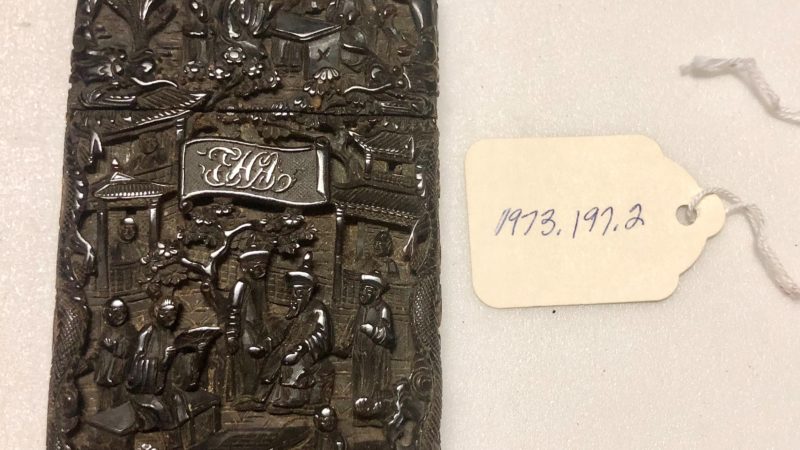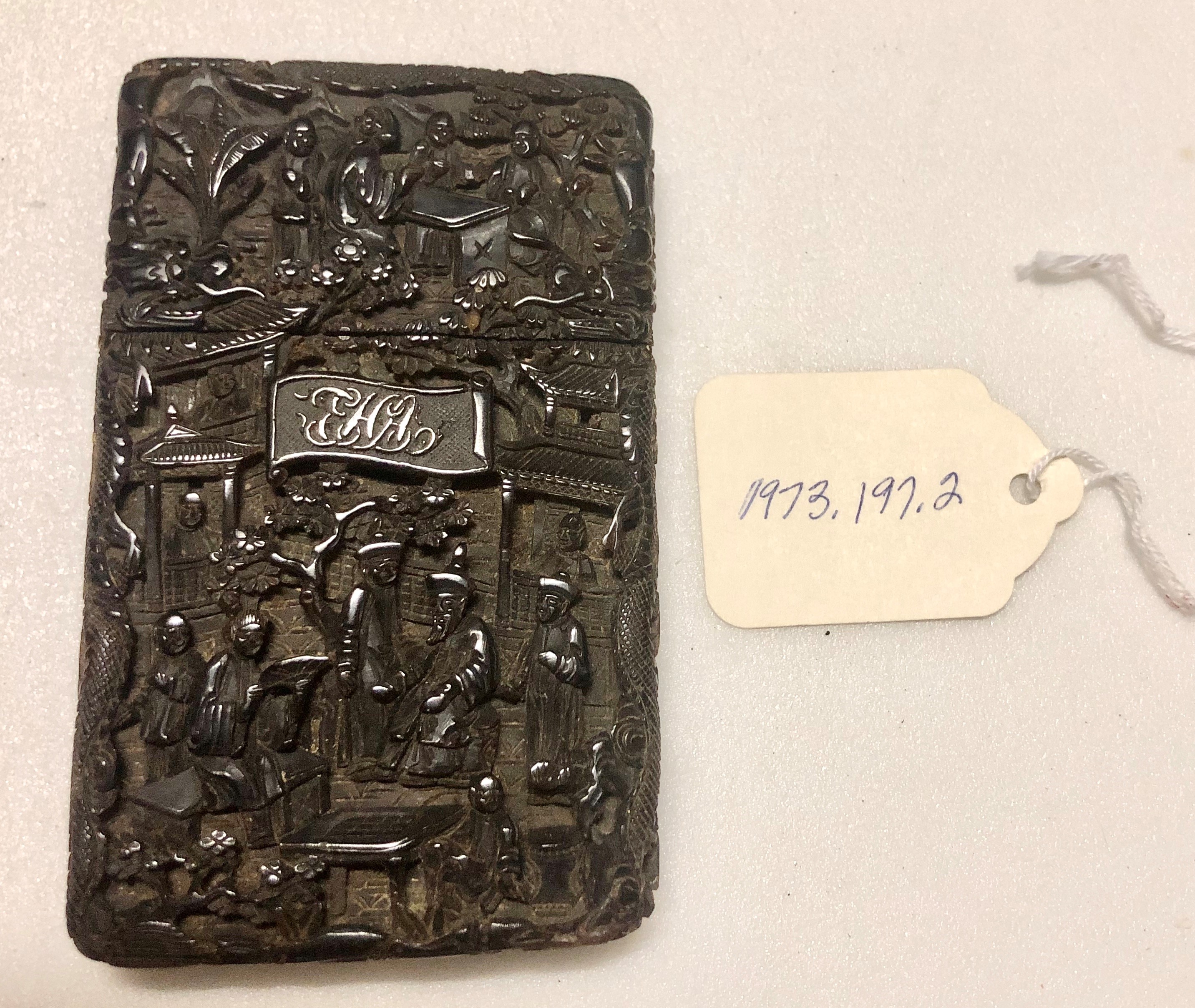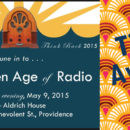
In the basement of the John Brown House, in a white-tiled storage room, in an archival box of men’s personal items, there is a small tortoiseshell case. The item is beautiful, with idyllic East Asian scenes carved deeply into its every face. Dragons border the front of the box, which is distinguished from the other sides by the initials EHA written in cursive upon an unrolled scroll. The inside is empty, but it once contained visiting cards, an essential facet of early-nineteenth century etiquette among the higher social strata. These cards were carried by both men and women with the purpose of introducing the owner, announcing their arrival as a guest, or indicating that they had called upon someone but found them not at home. They were markers of taste, both in their tactful deployment and in their design, which was always hypersensitive to the changing winds of culture. The simplest visiting cards were the most common in America, often nothing more than a name, printed or handsomely written on fine paper of middling width and length. If it were too large, then the owner was surely ostentatious; if it were too small, it reeked of offensive whimsy. Towards the end of the nineteenth century, calling cards became fanciful and lost their individuality, and by the start of the twentieth century, they had fallen out of use.
Nothing is known of the provenance of this particular card case. It was found in the collection and has yet to be inventoried. Clearly, considering the image content and its similarity to other tortoiseshell pieces, the case was purchased through the China Trade. Its estimated dating is circa 1835.
So who was EHA? It is likely that she or he was a wealthy Rhode Island resident. With the help of city directories and cemetery databases, it is possible to narrow down the list to a handful of possibilities. One of these is Eliza Harriet Arnold (1796-1873). Eliza was the daughter of Welcome Arnold and the wife of Zachariah Allen, both of whom were very successful businessmen. She would certainly have been able to afford this luxury item. What is more, her husband was an original and lifelong member of the RIHS, so some of her possessions could easily have ended up in the collection. She is buried in North Burial Ground as well. There was Edmund H. Angell (1815-1845), who was an accountant for the architectural firm of Tallman & Bucklin. He never married, and now rests in Grace Church Cemetery. Finally, Eliza Hubbard Adams (1806-1847) is perhaps the most likely candidate. She was the second wife of Adnah Sackett (1796-1860), who owned a jewelry company. Both are buried in the family plot at Swan Point Cemetery. In 1960, Eliza’s granddaughter Elizabeth Sackett Hazard donated a collection of family items to the RIHS, pieces from which were given the accession numbers immediately following the card case.
Unless some detailed record of this card case comes to light, EHA will remain a mystery. This is what makes research most delightful, the unanswered question which begs for more.
Sources:
- “Card Case.” The American Wing, The Metropolitan Museum of Art.
- Mayor, A. Hyatt. “Old Calling Cards.” The Metropolitan Museum of Art Bulletin 2, no. 2 (October 1943): 93-98.
- Frederic M. Sackett Papers. Rhode Island Historical Society Library MSS 695.
- G 1173 Ephemera Collection Box 5 Visiting Cards, Printed and Box 5 Visiting Cards, Handwritten. Rhode Island Historical Society Graphics Collection.


